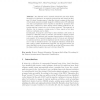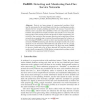87 search results - page 1 / 18 » Measuring and Detecting Fast-Flux Service Networks |
NDSS
2008
IEEE
14 years 5 months ago
2008
IEEE
We present the first empirical study of fast-flux service networks (FFSNs), a newly emerging and still not widelyknown phenomenon in the Internet. FFSNs employ DNS to establish ...
RAID
2010
Springer
13 years 9 months ago
2010
Springer
The fast-flux service network architecture has been widely adopted by bot herders to increase the productivity and extend the lifespan of botnets’ domain names. A fast-flux bot...
DIMVA
2008
14 years 9 days ago
2008
Botnets are large groups of compromised machines (bots) used by miscreants for the most illegal activities (e.g., sending spam emails, denial-of-service attacks, phishing and other...
CCS
2010
ACM
14 years 2 months ago
2010
ACM
Capturing Fast-Flux Service Networks (FFSNs) by temporal variances is an intuitive way for seeking to identify rapid changes of DNS records. Unfortunately, the features regard to ...
IMC
2009
ACM
14 years 5 months ago
2009
ACM
Fast-flux is a redirection technique used by cyber-criminals to hide the actual location of malicious servers. Its purpose is to evade identification and prevent or, at least de...


